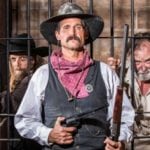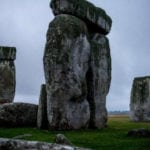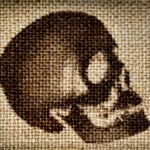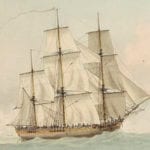 Creepy
Creepy  Creepy
Creepy  Movies and TV
Movies and TV 10 Movies That Get Elite Jobs Right, According to Experts
 Weird Stuff
Weird Stuff 10 Times Real Laws Were Based on Bizarre Hypotheticals
 Animals
Animals 10 Inspiring Tales of Horses Being Human
 Mysteries
Mysteries Top 10 Haunting Facts About the Ghost Ship MV Alta
 History
History 10 Surprising Stories About the Texas Rangers
 Humans
Humans 10 Philosophers Who Were Driven Mad by Their Own Theories
 Miscellaneous
Miscellaneous 10 Video-Game-Worthy Weapons and Armors from History
 Weird Stuff
Weird Stuff 10 Psychics Who Accurately Predicted Wartime Events
 The Arts
The Arts 10 Pieces of Art Inspired by a Broken Heart
 Creepy
Creepy 10 Death Superstitions That Will Give You the Creeps
 Movies and TV
Movies and TV 10 Movies That Get Elite Jobs Right, According to Experts
 Weird Stuff
Weird Stuff 10 Times Real Laws Were Based on Bizarre Hypotheticals
Who's Behind Listverse?

Jamie Frater
Head Editor
Jamie founded Listverse due to an insatiable desire to share fascinating, obscure, and bizarre facts. He has been a guest speaker on numerous national radio and television stations and is a five time published author.
More About Us Animals
Animals 10 Inspiring Tales of Horses Being Human
 Mysteries
Mysteries Top 10 Haunting Facts About the Ghost Ship MV Alta
 History
History 10 Surprising Stories About the Texas Rangers
 Humans
Humans 10 Philosophers Who Were Driven Mad by Their Own Theories
 Miscellaneous
Miscellaneous 10 Video-Game-Worthy Weapons and Armors from History
 Weird Stuff
Weird Stuff 10 Psychics Who Accurately Predicted Wartime Events
 The Arts
The Arts 10 Pieces of Art Inspired by a Broken Heart
10 Gunfights That Defined The Old West
The Old West is an iconic setting, one that worked as a backdrop for some of the most epic gunfights in history. Sure, our view of the Wild West is heavily romanticized by Hollywood, but it also created real legends that are as popular today as they were a century ago.
10Hickok-Tutt Shoot-Out

Westerns have popularized the concept of the duel—a one-on-one contest to see who’s the quickest draw. This wasn’t actually a common occurrence in the Old West, though. Most gunfights involved multiple gunslingers shooting every which way. However, that’s not to say that these duels never happened. In fact, this particular shoot-out popularized the concept and made a hero out of Wild Bill Hickok.
The duel took place on July 21, 1865 in Springfield, Missouri between Wild Bill and rival gambler David Tutt. These two were once friends but had a falling-out, so now Hickok refused to play with Tutt. In response, Tutt would often loan money to other players and coach them on how to beat Bill, but Bill would keep beating them all the same. Annoyed, Tutt reminded Hickok of a past debt of $35. Hickok claimed it was only $25 and refused to pay the extra $10.
To publicly humiliate him, Tutt stole Hickok’s gold watch as “collateral.” Bill couldn’t allow this because, as a professional gambler, he couldn’t develop a reputation of not paying his debts. So after a few rounds of failed negotiations and constant taunts from Tutt, the two met outside for a duel. Bill won and became the famed gunslinger we know today. However, here’s the part you don’t see in movies—afterward, he was charged with murder. He eventually was acquitted by pleading self-defense.
9Long Branch Saloon Gunfight

There was a time when Dodge City, Kansas was one of the most prominent places in the West, and the Long Branch Saloon was the most notorious place in town. At the height of its popularity, many notable figures made their way to the Long Branch Saloon, including legendary gunslingers Wyatt Earp and Doc Holliday. One of those characters was Levi Richardson, a pretty famous gunman in his day.
Richardson had issues with another patron, Frank Loving, after he supposedly hit on Loving’s wife. At first, this only caused minor tension between the two with them hurling taunts at each other. In March 1879, they got into a fistfight. Then things finally came to a head on April 5, 1879, when Richardson entered the saloon looking for Loving, who wasn’t there. He settled into a game of poker until Loving walked in, doing the same at another table. Richardson got up and sat opposite Loving. The two of them spoke quietly to each other until, finally, both got up and started firing.
According to witnesses, five or six shots were fired. Richardson was hit three times, while Loving was only grazed by one bullet. Loving was arrested but was released later, claiming self-defense. Weirdly enough, Loving would meet his end in another famed shoot-out dubbed the Trinidad Gunfight, killed by gambler John Allen—who would also be acquitted in the same fashion.
8Power’s Cabin Shoot-Out

This is one of the last true Western gunfights, taking place in 1918. To put that in perspective, the last person involved in the shoot-out died in 1976. It’s weird to think that someone who started life in the Old West lived long enough to catch the disco era.
While the rest of the world was shaken by World War I, the Galiuro Mountains in Arizona were still part of the wild and violent frontier. There, Jeff Power and his sons John and Tom were enjoying a modest living as ranchers and miners.
On February 9, 1918, a posse consisting of Sheriff Robert Frank McBride and three deputies was heading to the cabin to serve four warrants. Two were for John and Tom for draft dodging, and two were for Jeff Power and a worker, Tom Sisson. They were wanted in connection with the suspicious death of Jeff’s daughter, Ola May.
It’s hard to tell who started shooting first. But at dawn the next day, a shoot-out started that left four men dead and led to one of the biggest manhunts in Arizona’s history. Two of the deputies were gunned down almost immediately, as well as Jeff Power, who was standing outside. The sheriff was also killed, and the remaining deputy retreated, allowing the brothers and Sisson to make a run for it. Several posses formed to capture the fugitives, who were eventually caught a month later by an army patrol.
7Four Dead In Five Seconds
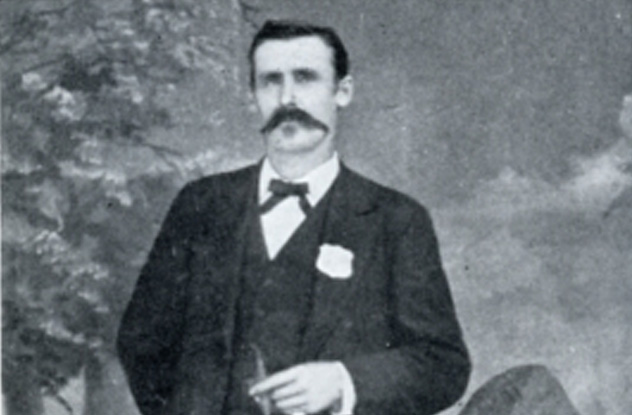
This shoot-out also goes by the name of “The El Paso Gunfight,” but its most memorable moniker is the self-explanatory “Four Dead in Five Seconds Gunfight.” It featured Dallas Stoudenmire, a notorious marshal known for his ability (and willingness) to gun down opponents. In his brief career as marshal, Stoudenmire killed 10 people, more than many other iconic Old West figures.
On April 14, 1881, a Mexican posse was tracking down two missing vaqueros (Mexican cowboys) who were pursuing cattle rustlers. This led them to El Paso, specifically to the farm of one Johnny Hale. A trial ensued, where two of Hale’s accomplices were convicted for the murders of the vaqueros. During the trial, constable Gus Krempkau acted as interpreter because he knew Spanish.
A few hours later, Krempkau was approached by Hale and his friend, former marshal George Campbell. Hale was furious that Krempkau had sided with the Mexicans. In a fit of rage, he pulled out Campbell’s gun and shot Krempkau.
Stoudenmire, across the street, heard the shot and barged into the room guns blazing. He first shot an innocent bystander. Then he shot Hale between the eyes. Krempkau, barely alive, pulled out his own gun and shot Campbell in the hand. Then Stoudenmire also shot Campbell in the stomach, and both he and Krempkau died within minutes. So, technically, four people didn’t die in five seconds, but the name stuck nevertheless.
6Gunfight At Blazer’s Mill

The Lincoln County War was an ongoing feud between two groups throughout 1878 for control of the dry goods trade in Lincoln County. Hostilities seriously escalated with the assassination of John Tunstall, the leader of one of the groups. This led his men to form a posse called “The Regulators” to kill anyone implicated in his murder. The Regulators were led by cowboy Dick Brewer and included many prominent gunfighters of the time, most notably Billy the Kid.
The gunfight at Blazer’s Mill represents the legendary last stand of Andrew “Buckshot” Roberts against a dozen or so Regulators. Roberts went inside Blazer’s Mill, which also functioned as a trading post, when he was approached by one of Brewer’s men who wanted him to surrender. However, several other armed men soon came to take Roberts by force. He grabbed his rifle and started firing. He shot several Regulators, although nobody was killed at this time. Roberts himself got the worst of it with a shot straight to the stomach. When he ran out of bullets, he barricaded himself inside the mill.
None of the Regulators wanted to go confront Roberts. Eventually, Brewer circled around the mill hoping to surprise Roberts. He opened fire but missed. Buckshot returned fire and hit Brewer right in the eye, killing him instantly. Completely demoralized, the other Regulators retreated, but Roberts died of his wounds a day later.
5Coffeyville Bank Robbery
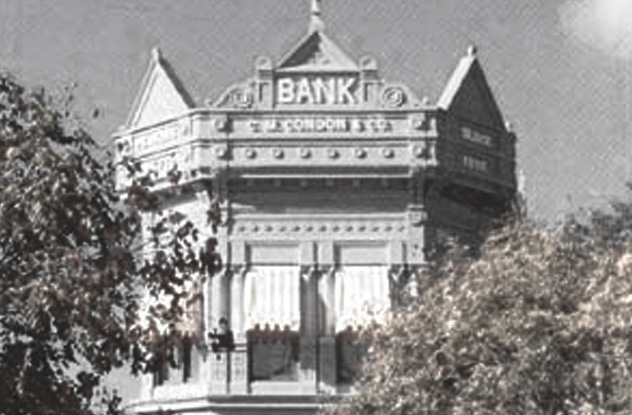
The Dalton Gang was one of the most notorious criminal operations active in the Old West. Led by big brother Gratton “Grat” Dalton, the gang also contained brothers Bob and Emmett as well as several other members. On October 5, 1892, the Daltons attempted their most ambitious heist yet by robbing two banks on the same day.
They went to banks on the opposite sides of the street in Coffeyville, Kansas. However, they were successfully stalled by an employee who convinced them that the safe was on a timer, so they needed to wait before opening it. During this delay, Coffeyville residents learned of the heists, armed themselves, and waited for the criminals to come outside. Three residents were shot in the ensuing shoot-out. The marshal was killed, as were four members of the gang, including Grat and Bob Dalton.
Even so, the weirdest turn of events was reserved for younger brother Emmett Dalton. He survived the shoot-out despite sustaining multiple gunshot wounds. He spent the next 14 years in prison, and afterward, he went Hollywood.
Taking advantage of his notoriety, he wrote a novel in 1918 about the Daltons called Beyond the Law. That same year, the book was turned into a Western, and Emmett played himself in the movie, as well as his two brothers. Afterward, he settled into an average life, getting married and becoming a real estate agent.
4Frisco Shoot-Out
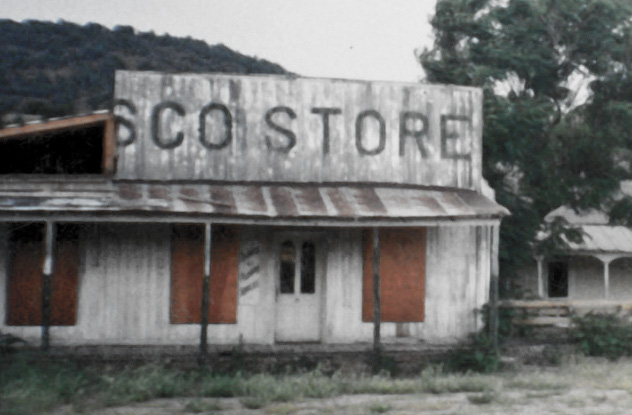
As far as one-sided shoot-outs go, there is probably none greater than the gunfight that took place on December 1, 1884 in Reserve, New Mexico. On one side, we had just one lawman by the name of Elfego Baca. On the other we had a group of angry cowboys numbering anywhere between 40 and 80 people.
It all started when Baca arrested a drunk by the name of Charlie McCarty for shooting his guns randomly. However, McCarty had a lot of dangerous friends who soon came demanding his release. Baca managed to fend off this initial attack when the leader was killed by his own horse toppling onto him.
By this time, word started spreading that there was some kind of Mexican uprising, so an angry mob formed to deal with it. When the mob arrived in town, Baca was holed up inside a small house belonging to a local. When William Hearne, the leader of the mob, tried to break down the door, Baca killed him with two shots, officially starting a shoot-out that would last a staggering 36 hours.
Supposedly, up to 80 people took part in the gunfight and shot up to 4,000 rounds into the house. None of them hit Baca. The reason: The house had a dirt floor, and he’d dug a hole into it, lending himself cover. Eventually, the posse ran out of bullets. When proper authorities arrived, they surrendered, leaving Baca victorious.
3Davis–Sydney Ducks Shoot-Out
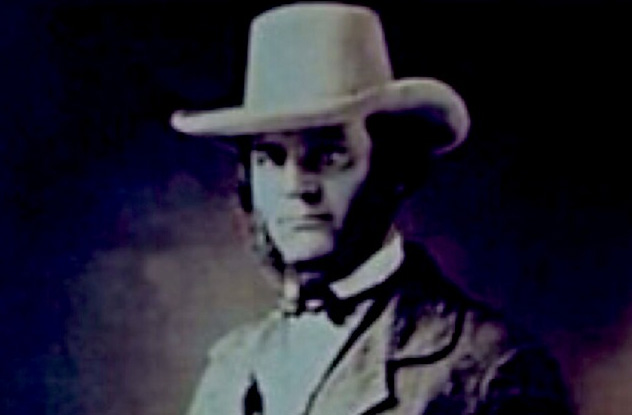
If there is one man you definitely don’t want to face in a gunfight, it’s Captain Jonathan R. Davis. On December 19, 1854, he single-handedly took on a dangerous gang of robbers and killed 11 of them.
Davis was a former army captain turned prospector. On the day in question, he was working with his two partners when they were ambushed by a band of outlaws. Almost half of the men were “Sydney Ducks,” criminal immigrants from Australia. The rest were Mexicans, Americans, Brits, and even a Frenchman, 13 in total. They were thought to be responsible for 10 murders just in the few days prior.
They charged the three prospectors, guns blazing. Davis’s partners were gunned down immediately. One died on the spot, and the other would succumb to his wounds days later. Davis had time to pull out his revolvers and start firing.
By the time he ran out of bullets, seven outlaws were on the ground. Four of the survivors decided to approach Davis with blades—three with Bowie knives and one with a sword. Unfortunately for them, Davis had his own knife and was quite adept at using it. He took turns disarming and stabbing each one of his assailants, even cutting the nose off one of them.
The remaining robbers, finally realizing they had no chance, made a run for it. Seven of their comrades lay dead at Davis’s feet, and four more later died of their injuries.
2Gunfight At The OK Corral
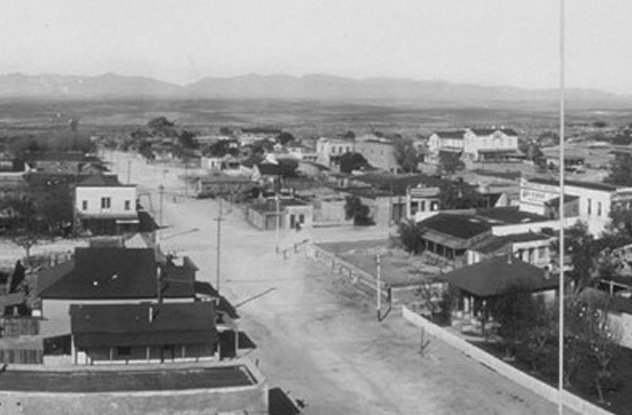
This is definitely the most famous Old West gunfight and one that turned Wyatt Earp into an icon. However, it involved eight other people who never attained the same level of fame. At the time, older brother Virgil was actually the leader of their group because he was town marshal in Tombstone. Yet Wyatt Earp captured American’s imagination, mostly by appearing in popular dime novels of the time.
So, on one side, we have three Earp brothers: Wyatt, Virgil, and Morgan, and their friend, Doc Holliday. On the other we have five members of a notorious gang called “The Cowboys”: Ike and Billy Clanton, Billy Claiborne, and Tom and Frank McLaury. There was a lot of tension between these factions, and The Cowboys made numerous not-so-veiled threats at the Earps. On October 26, 1881, they had finally had enough, and the three Earp brothers and Holliday approached The Cowboys looking to settle the score.
According to the Earps and witnesses, they didn’t go there looking to fight. They told The Cowboys to surrender their weapons, and the gunfight started when they refused. By the end, three Cowboys were dead, Virgil and Morgan were wounded, and Doc had been grazed by a bullet. It only lasted 30 seconds and didn’t actually take place at the OK Corral, but it was enough to secure its place in history.
1Earp Vendetta Ride

Not many gunfight stories mention the consequences, but this one is the direct result of the infamous OK Corral shoot-out. The Cowboys gang was quite large, so other members naturally sought revenge on the Earp brothers for their fallen comrades. This resulted in an attack that maimed Virgil Earp and an ambush that killed Morgan. In response, Wyatt, now a US Marshal, formed a federal posse and went after the culprits in what would be known as the Earp Vendetta Ride.
The posse rode from March 20 until April 15, 1882, tracking down The Cowboys. In Tucson, they killed Frank Stillwell, one of the suspects in Morgan’s murder. However, the highlight of the Ride was a large shoot-out near Iron Springs on March 24. The posse came upon nine members of The Cowboys, including William Brocius (aka “Curly Bill”), another participant in Morgan Earp’s assassination.
Curly Bill saw the posse approaching and was the first to fire his shotgun at Wyatt, but he missed. Earp fired back and hit Bill square in the chest, killing him instantly. What followed was a gunfight between the two factions, but nobody else was killed except for a horse belonging to one of the lawmen, Texas Jack Vermillion.
Eventually, The Cowboys made their escape. During the gunfight, Earp was shot numerous times through his clothes. One bullet hit his bootheel, and another hit his saddle horn, but he otherwise escaped unscathed once again.
Radu is a history/science buff who writes for GeeKiez when he isn’t writing for Listverse.

